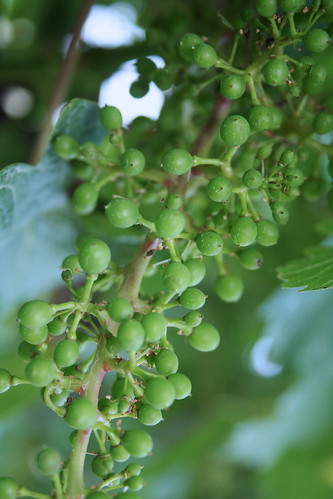The eastern-most region of Italy surrounded by Austria, Slovenia and the Adriatic Sea.
THE white wine region in Italy; grape growing and wine making has been important to the region since before the French had even heard of wine. The smaller winemakers with their careful selection of grapes, care of the ground and concerns for the cellars are becoming more and more important.
Friuli Venezia Giulia is, geographically, the center of Europe. Our voyage starts in Trieste, a multi-ethnic border city. Mediterranean, yet Central European and bright when lashed by the bora (winds). In the heart of Trieste, is Piazza dell’Unità, one of the most suggestive in the whole country. This square is a symbol of the love that people from Trieste have for coffee and the places to enjoy it. In Trieste of Hapsburg times, people commonly gathered to drink coffee and to chat about culture in city meeting spots. This is why Trieste has so many elegant, historic cafes filled with the literary ferment of of past centuries. Multi-ethnicity is evident in Trieste by the variety of religions and churches: Greek Orthodox, Serbian Orthodox, a Synagogue, and an Evangelical Lutheran Church.
Sitting down to eat means celebrating other rituals. A step backwards helps to outline the complexity of the Friuli identity, and the composite gastronomic tradition where Giuliana, Hapsburg, and Friuli influences can be identified. Mediterranean and Central European flavors share the table. Here we start with a broth and move on to a lamb with kren (horseradish). The dessert tray is varied: strucolo di pomi (apple strudel), palacincke (walnut filled crepes), presnitz, dried fruit and chocolate stuffed puff pastry.
The Castello di Diramare is very close to Trieste and worth a visit. Leaving Trieste we move onto Muggia, the last fragment of Italy before Slovenian territory, and here we see the Medieval wall surrounding Muggia’s elegant historical centre.
Passing through Carso, we go towards Gorizia, that has always been the borderland, once a Hapsburg city and iron curtain. Sitting down to the table we start with a first course that is clearly Central European based: Gnocchetti, with melted butter, prunes and cinnamon, moving onto muset e brovada (the prized cotechino — pork sausage with white grated radishes soured fresh wine pressings and grape skin residue). We finish with gubana doused in prune aquavit.
From Gorizia we head west and arrive in Cormons where the architecture evokes the long Austrian domination. We arrive to the Isontine hillside in the Collio wine area. Collio wines are a balanced union of character, elegance, personality and power. Now we move towards one of the pearls of Friuli Venezia Giulia – Cividale del Friuli, situated among its terraced hills and magnificent vineyards, a rich testimony to Roman times. Keep your eyes open because we are about to reach a city synonymous with the product loved everywhere: San Daniele del Friuili and its DOP proscuitto.
Not far from San Daniele del Friuli is Rive d’Arcano with its Castello Arcano Superiore. We are in the territory of Colli Orientali (western hills) del Friuli, one of the most world-renowned wine making areas. Ramandolo and Picolit are two of the gems to visit before we move on to Gemona. The beautiful Dome is reached from Porta Udine, and enjoy a stroll in via Bini in the historic center before we travel just a little ways to visit Tarcento and then Venzone.
We are in Tarvisio, which is the extreme northwestern border of Friuli. We veer west and into another splendid territory, Carnia. We make a stop in Sauris, with its stone and wood houses, and sit down to the table. The first course that characterises all of Carnia is cjarsons, semi-sweet ravioli stuffed with herbs, potatoes, raisins and cinnamon then drizzled with melted butter and sprinkled with grated smoked ricotta. We move to Pordenone where the Corso (high street) unravels in elegant porticoes in the historic center. In Udine we stop in the beating heart of the city, Piazza della Libertà and visit the Loggia di San Giovanni.
From Udine we head back east to visit Marano, a charming authentic fishing village. Here we taste the typical dish – boreto a la graisàna or rather the catch of the day with garlic, oil vinegar, salt and pepper, served with white polenta. Moving a bit further east and we are in Grado with another elegant historic center. It is a pleasure to idle about the small squares and tiny streets while admiring the picturesque fisherman’s homes. Grado was once the port of the not too distant Aquileia, the highly important city of the Roman empire, with and archaeological area deemed a World Heritage Site by UNESCO.
Our journey in Friuli Venezia Giulia ends here in Aquileia, and immensely fascinating land. We are reminded of the words in a novel written by Susanna Tamaro “Go where your heart takes you….And when many roads open before you and you don’t know which one to take, don’t take just any one, but sit and wait. Breathe with a breath, as deep as the one you took on the day you were born, let nothing distract you. Wait and wait some more. Stay still, in silence and listen to your heart. When it speaks to you, stand up and go where it takes you”.